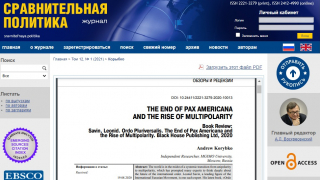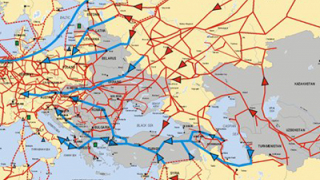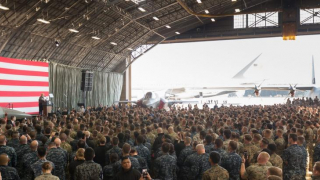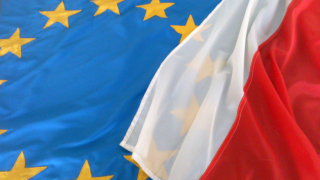NSA Surveillance Through the Prism of Political Repression
23.07.2013
July 28th marks the 35th anniversary of the political assassination of two Puerto Rican independence activists, Carlos Soto Arrivi and Arnaldo Dario Rosado, in the infamous Cerro Maravillai case. This case, which was widely followed among Puerto Ricans, involved an agent provocateur that led the activists to an ambush that resulted in their brutal murder by paramilitary agents within the colonial police force. The event led to two investigations, the second of which revealed a conspiracy to cover up both the assassination plot as well as the destruction and manipulation of evidence carried out by the colonial police and justice department, and well as the federal justice department and FBI. Cerro Maravilla symbolizes for many the most outstanding recent example of repressive measures, from surveillance to political assassination, unleashed by US imperialism against the anticolonial movement in Puerto Rico.
The recent revelations of NSA spying by Edward Snowden have provoked mass outrage across the globe. Much of the consternation comes from what is commonly understood as a violation of privacy. In the official media, Snowden’s actions have been framed as a debate between ‘national security’ and ‘privacy’. However, framing the question in these terms is pure subterfuge. The Puerto Rican experience shows that the true objectives of surveillance programs by intelligence agencies like the NSA, CIA, and FBI having nothing to do with ‘security’ or ‘protection’ but rather political repression. Systematic surveillance can only be understood as an essential part of state repression, the purpose of which is to intimidate those that question the status quo by promoting a culture of fear. One can never be separated from the other.
The systematic surveillance and repression of Puerto Rico’s anticolonial movement is obviously just one example of many. A brief historical sketch of US imperialism’s repressive efforts against anticolonial forces in Puerto Rico must begin with the political intrigues that preceded the 1898 military invasion as well as the martial law that characterized both military and civilian colonial governments in its immediate aftermath. This history goes on to include the surveillance and repressive attacks against the Puerto Rican Nationalist Party and its followers from the 30s through the 50s, which included massacres of unarmed civilians, political assassinations and imprisonments, the harassment and attacks against labor unions and newly emergent socialist organizations of the same period, as well as COINTELPRO operations against resurgent nationalist and socialist political formations during the 60s and 70s.ii Indeed, in 1987 it was revealed that over 130,000 files on individuals and organizations had been accumulated through systematic surveillance on the island. This history is an integral part of the parallel campaigns of systematic state repression unleashed within the United States against groups such as the Black Liberation Movement, the American Indian Movement, the Chicano Liberation Movement, radical labor organizations, progressive students and antiwar activists, as well as communists.iii As such, what constitutes a scandal for the broader public is in fact part of the daily reality for those that fight for freedom and an end to oppression.
Snowden’s revelation that the United States Security Group Command’s Sabana Seca installation, located in the northern coastal municipality of Toa Baja, is part of an international surveillance network, which includes the Fornstat program, comes to no surprise to Puerto Rican anticolonial activists. From Sabana Seca, US naval intelligence monitors and gathers Internet, phone, and other forms of communication. In 1999, Duncan Campbell and Mark Honigsbaum of The Guardian already highlighted the naval intelligence’s “Echelon” operations from Sabana Seca and other locations both in the US and internationally as part of joint US British surveillance programs.iv
What is critical to highlight about US imperialism in Puerto Rico is the continued military character of colonialism on the island. For the benefit of those that may be unaware or who take the position that US militarism characterized only the past history of colonialism in Puerto Rico, a few contemporary examples serve to illustrate the point. Over the past decade and a half, Puerto Ricans have mobilized en masse to oppose a proposed military radar system intended for the Lajas valley in the southwestern part of the island, to end the practice of using the eastern island of Vieques as a bombing range by the US military and its allies (It should be noted that there was also a successful campaign to end the militarization of Culebra island also off the eastern coast of the main island in the 70s), and in more recent times against a system of potentially toxic and environmentally destructive antennas used both by the military and cellular companies that have proliferated across the island. In an article in the current issue of Claridad, the spokesperson for the grassroots Coalition of Communities Against the Proliferation of Antennas, Wilson Torres, sheds light on the US military’s Full Spectrum Dominance program currently being implemented in Puerto Rico. v
Understood in the context of pervasive unemployment, which serves to ensure an ever present pool of recruits used as cannon fodder in US military campaigns throughout the world as well as the structural dependence of large parts of the colonial economy on the Pentagon, this picture constitutes the modified form of US militarism in Puerto Rico in the present context. One may add the militarization of the colonial police force in the ongoing attacks against residents of public housing and other marginalized communities to this reality.
It would not be difficult to draw parallels between much of what is described immediately above and the realities faced by many North Americans. Heavy-handed policing and economically depressed communities dependent upon military or prison industries are a familiar reality for many. Yet the notion that the United States of America is characterized by a repressive state is much more difficult for the average person to accept. The narrative of 9/11 provides the pretext that results in the conflation of national security and state repression in the minds of many.
Notwithstanding, the revelations about the NSA spying program have provoked the condemnation of all except the most recalcitrant sycophants of US imperialism. Yet, it is absolutely necessary to place these programs in the context of the long history of state repression and militarism. Those on the left must push to extend the public discourse beyond questions of personal privacy to a discussion of systematic political repression within increasingly militarized “liberal” democracies. The experiences of anticolonial activists and militant, class-conscious revolutionaries from Puerto Rico lend valuable insights that add to the discussion around the significance of what Snowden’s leaks reveal: systematic surveillance and state repression are two sides of the same coin.
An insightful comment by Marx, writing in the New York Daily Tribune about British imperialism in India during the mid 1800s and often repeated among Puerto Rican comrades, is a useful starting point for the US left:
“The profound hypocrisy and inherent barbarism of bourgeois civilization lies unveiled before our eyes, moving from its home, where it assumes respectable form, to the colonies, where it goes naked.”














